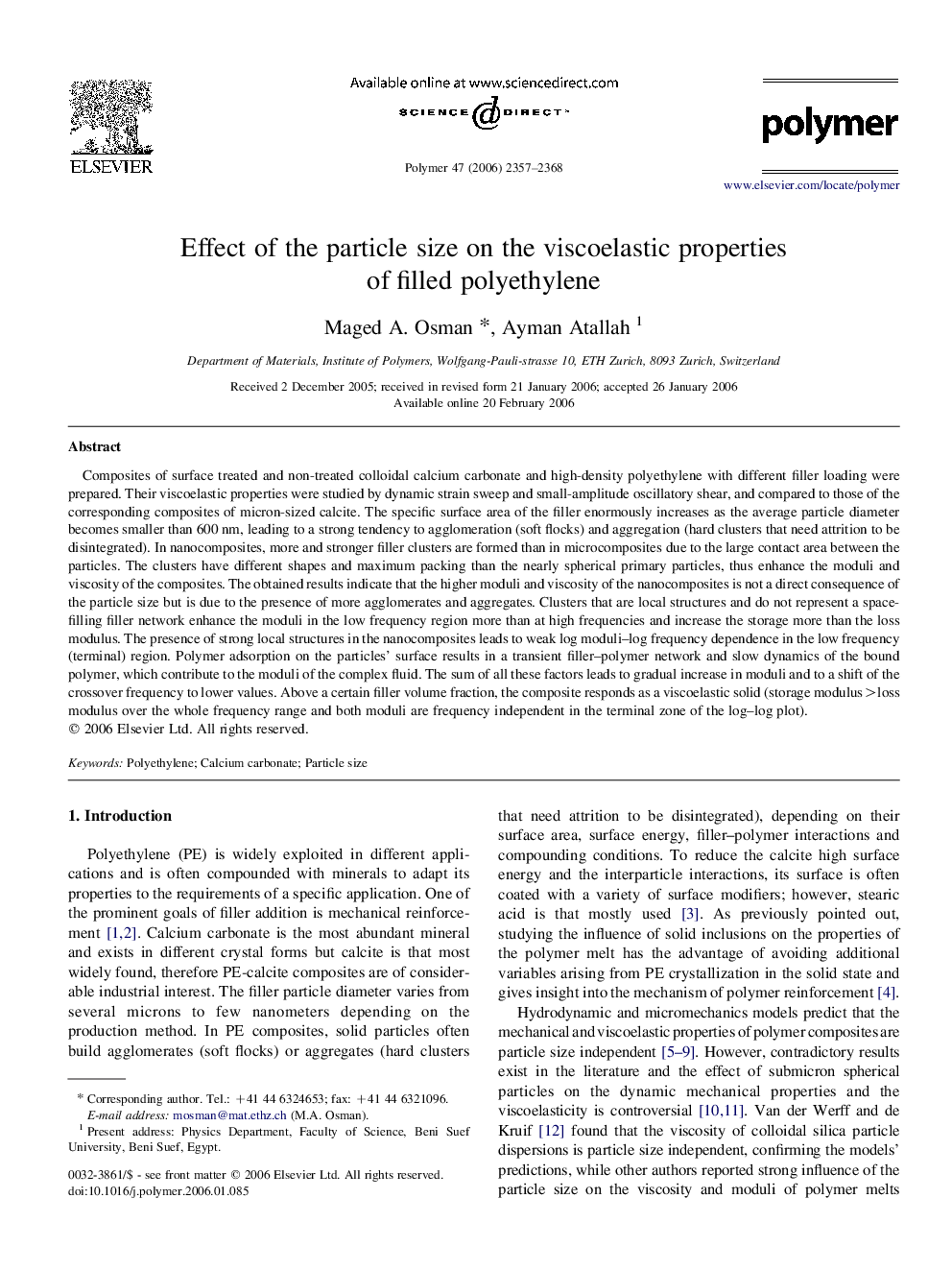| کد مقاله | کد نشریه | سال انتشار | مقاله انگلیسی | نسخه تمام متن |
|---|---|---|---|---|
| 5190984 | 1381223 | 2006 | 12 صفحه PDF | دانلود رایگان |
عنوان انگلیسی مقاله ISI
Effect of the particle size on the viscoelastic properties of filled polyethylene
دانلود مقاله + سفارش ترجمه
دانلود مقاله ISI انگلیسی
رایگان برای ایرانیان
موضوعات مرتبط
مهندسی و علوم پایه
شیمی
شیمی آلی
پیش نمایش صفحه اول مقاله

چکیده انگلیسی
Composites of surface treated and non-treated colloidal calcium carbonate and high-density polyethylene with different filler loading were prepared. Their viscoelastic properties were studied by dynamic strain sweep and small-amplitude oscillatory shear, and compared to those of the corresponding composites of micron-sized calcite. The specific surface area of the filler enormously increases as the average particle diameter becomes smaller than 600Â nm, leading to a strong tendency to agglomeration (soft flocks) and aggregation (hard clusters that need attrition to be disintegrated). In nanocomposites, more and stronger filler clusters are formed than in microcomposites due to the large contact area between the particles. The clusters have different shapes and maximum packing than the nearly spherical primary particles, thus enhance the moduli and viscosity of the composites. The obtained results indicate that the higher moduli and viscosity of the nanocomposites is not a direct consequence of the particle size but is due to the presence of more agglomerates and aggregates. Clusters that are local structures and do not represent a space-filling filler network enhance the moduli in the low frequency region more than at high frequencies and increase the storage more than the loss modulus. The presence of strong local structures in the nanocomposites leads to weak log moduli-log frequency dependence in the low frequency (terminal) region. Polymer adsorption on the particles' surface results in a transient filler-polymer network and slow dynamics of the bound polymer, which contribute to the moduli of the complex fluid. The sum of all these factors leads to gradual increase in moduli and to a shift of the crossover frequency to lower values. Above a certain filler volume fraction, the composite responds as a viscoelastic solid (storage modulus>loss modulus over the whole frequency range and both moduli are frequency independent in the terminal zone of the log-log plot).
ناشر
Database: Elsevier - ScienceDirect (ساینس دایرکت)
Journal: Polymer - Volume 47, Issue 7, 22 March 2006, Pages 2357-2368
Journal: Polymer - Volume 47, Issue 7, 22 March 2006, Pages 2357-2368
نویسندگان
Maged A. Osman, Ayman Atallah,